
Rotate your tablet
for a better experience


Rotate your tablet
for a better experience
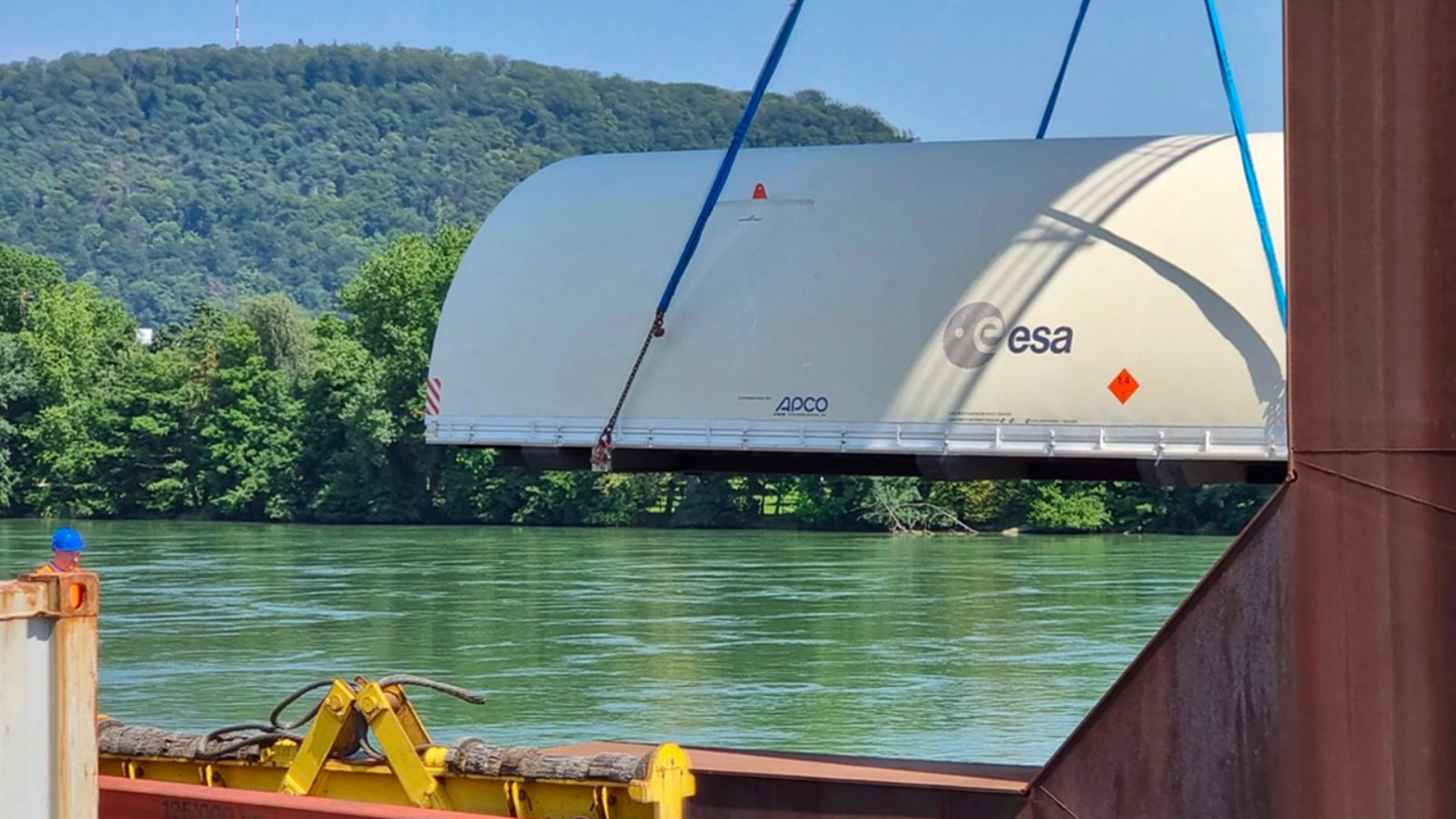
How do we build a rocket across an entire continent?
With a great deal of organization and brain-racking! At this summer’s end, here are some postcards of the different journeys our launcher parts make.
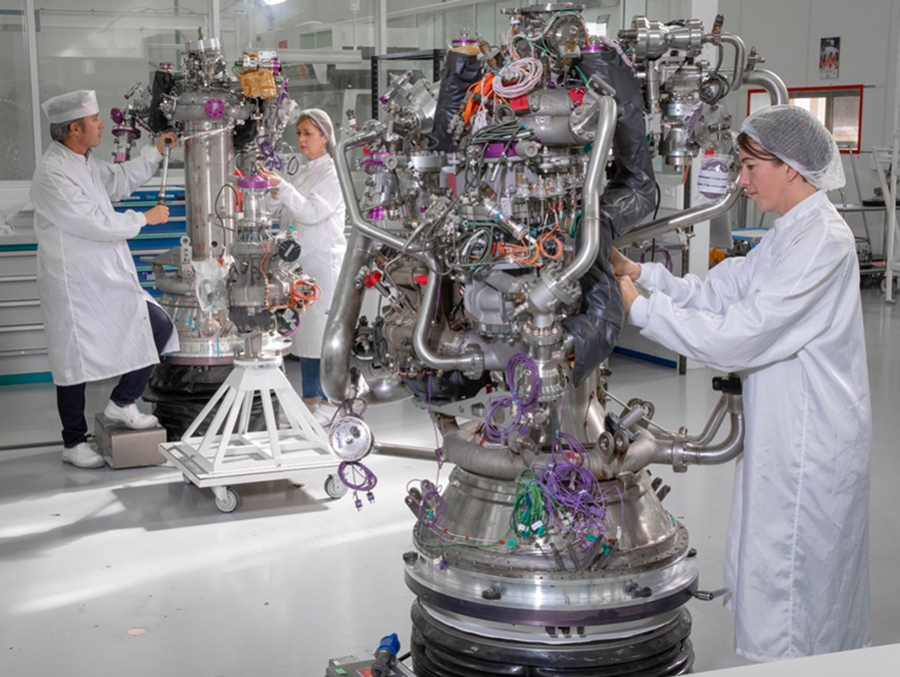
@arianegroup
Our report begins with the engines at our site in Vernon, northern France, where most of the Vulcain 2, Vulcain 2.1 and Vinci engines are integrated, as you can see our in this photo.
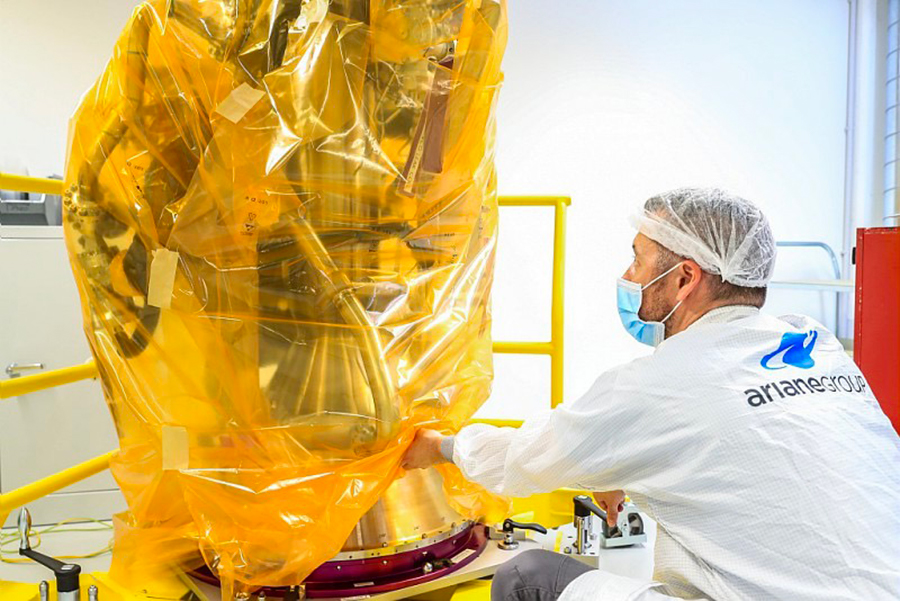
The engines are then packed with great care to protect these extremely complex parts. The Vinci engine (seen here) then embarks on a long voyage to be integrated into the rest of the launcher.
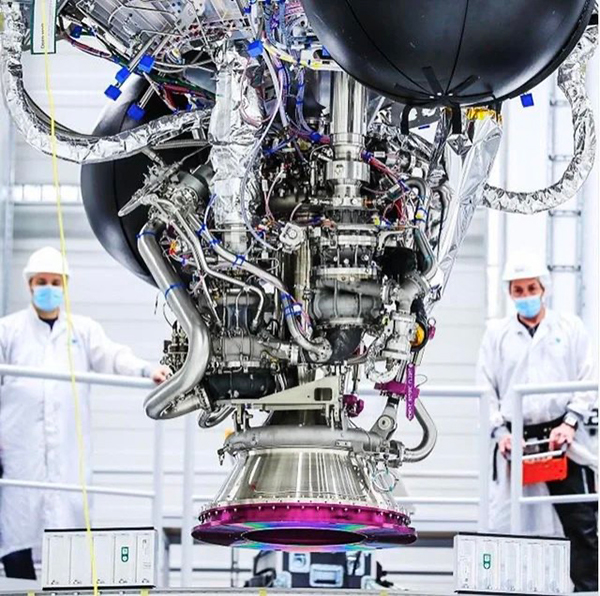
@ArianeGroup
First, Vinci travels by road to the ArianeGroup site in Bremen (Germany) where it is integrated into the rest of the upper stage. Here, you can particularly see the spheres of pressurized helium (the black balls) that help to control the behavior of the stage’s propellants.
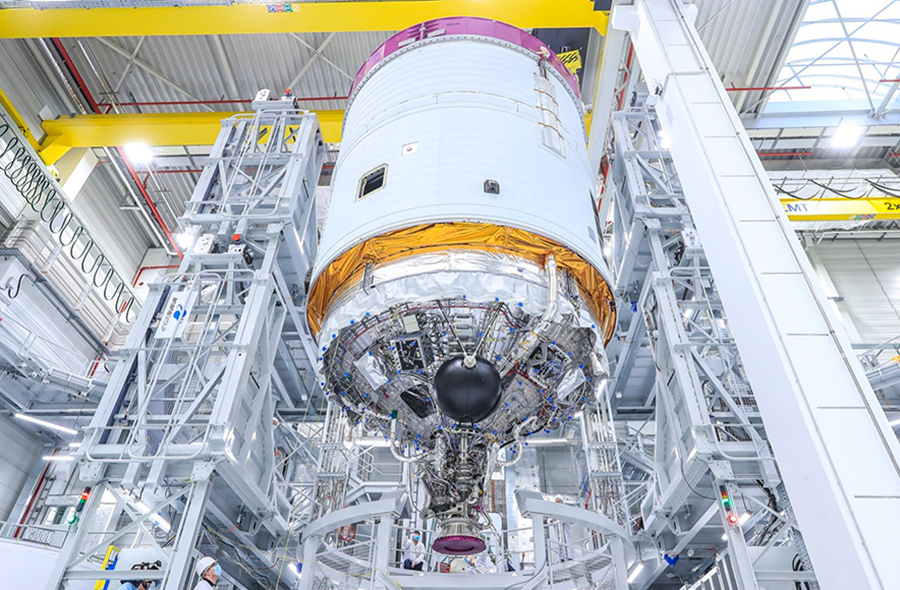
@ArianeGroup
Once it is fully integrated, the stage is turned on its side and placed horizontally in a container. As it measures a full 11.6m in height, just imagine the size of the huge trailer needed to carry it!
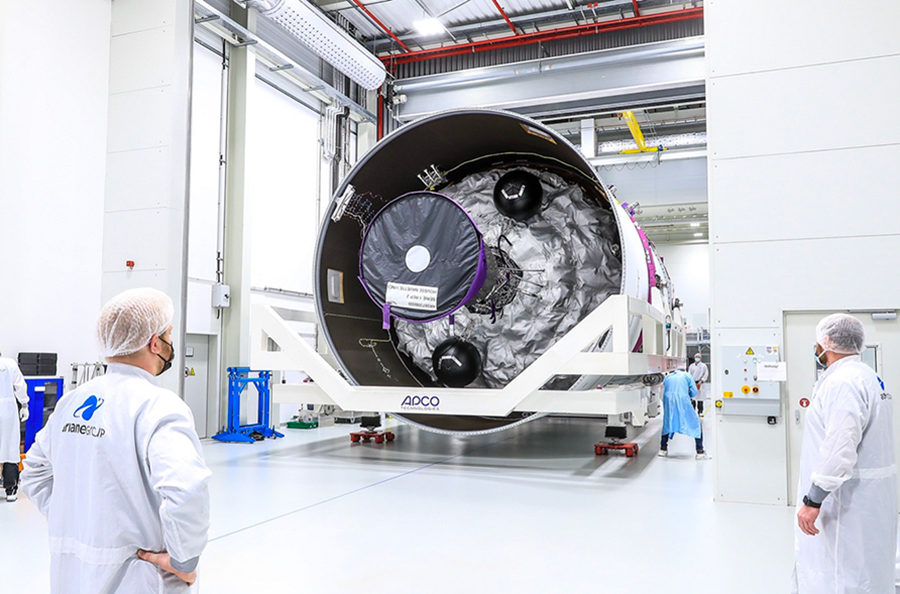
@ArianeGroup
This stage is so big that, to travel to the port of Neustadt only 7 km from our site in Bremen, the roads must be closed and the transport vehicle must creep along – quite the opposite of what the launcher is designed to do on its mission into space (average speed of 7,000 km/hour)!
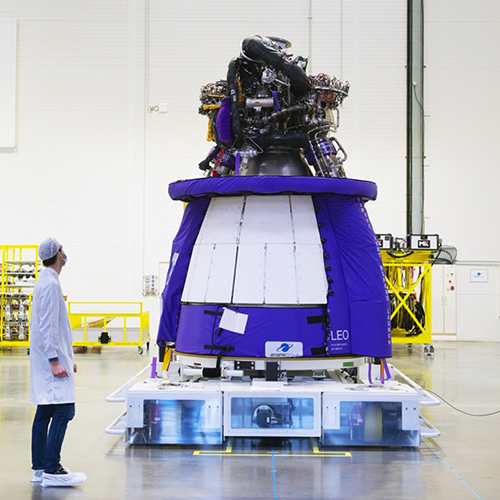
In the meantime, the first Ariane 6 Vulcain 2.1 engines travel a short distance in France to our site in Les Mureaux located only 39 km from Vernon. There, the engine will be integrated into Ariane 6’s core stage.
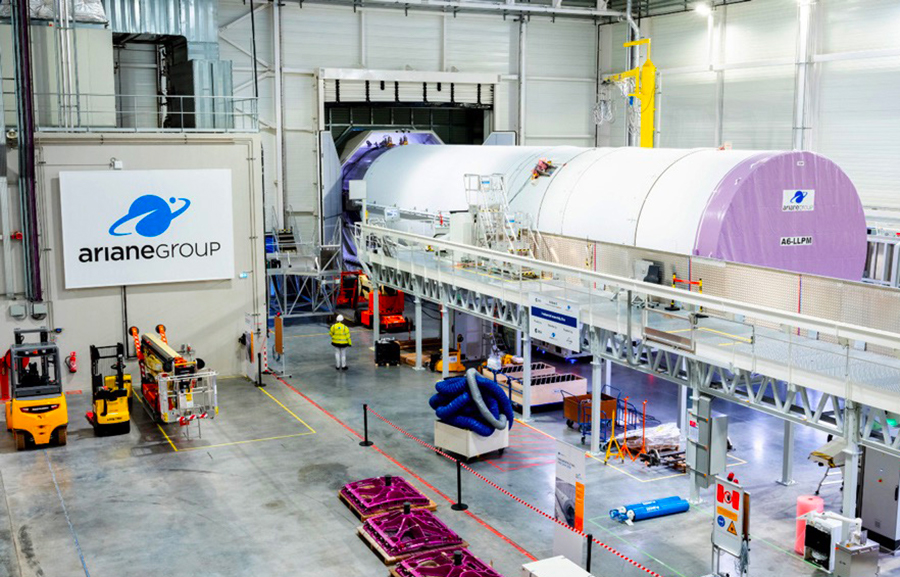
© ARIANEGROUP/PEPPERBOX/J. HAZEMANN
During this step, the principle is the same as for the upper stage, except that the stage is built directly in a horizontal position. This is one of the new features of Ariane 6, making it quicker and easier to integrate.
The stage is then placed in a container. As the site in Les Mureaux has its own access to the river Seine, the container can be directly loaded onto its transport ship.
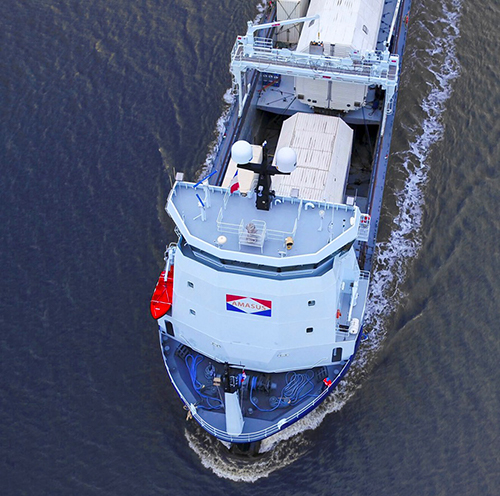
@ArianeGroup
And it heads off for Le Havre, traveling 142 km along the river. The distance by road would be 160 km with a lot of tricky infrastructure to negotiate along the way.
For the fairing, the adventure starts in Basel, Switzerland, at Beyond Gravity, specialist in this part of the rocket for many years. The photo shows several half-shells of the Ariane 5 fairing (particularly those for the James Webb telescope launch), but the transfer processes are the same for Ariane 6.
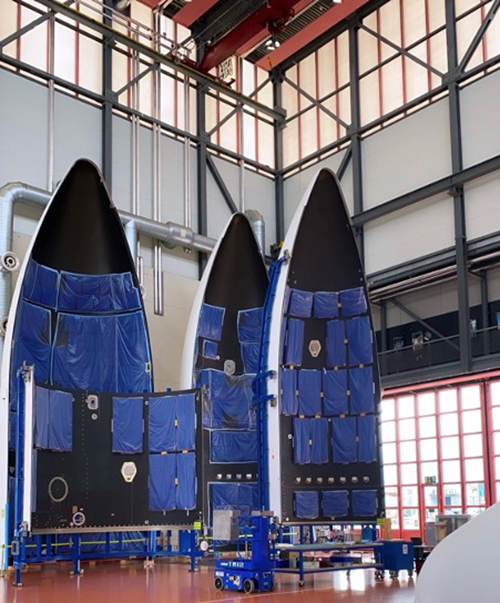
©Beyond Gravity
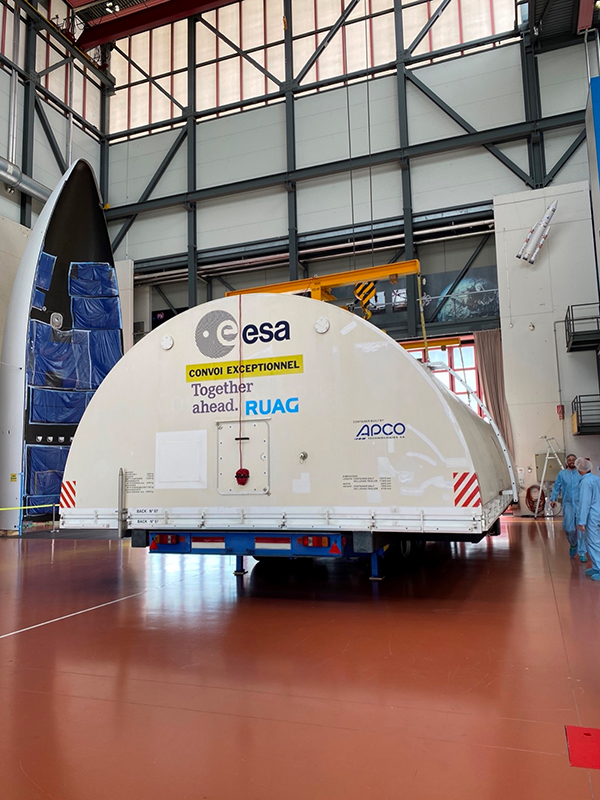
©Beyond Gravity
The easily identifiable fairing containers are semi-circular to provide optimum protection for the payloads. They often feature the logo of the European Space Agency (ESA).
The journey from Basel to Emmen (in the Netherlands) is done by truck and, like the upper stage, some roads have to be closed and the convoy travels as a “special load”. For this reason the 722-km journey is usually undertaken during the night.
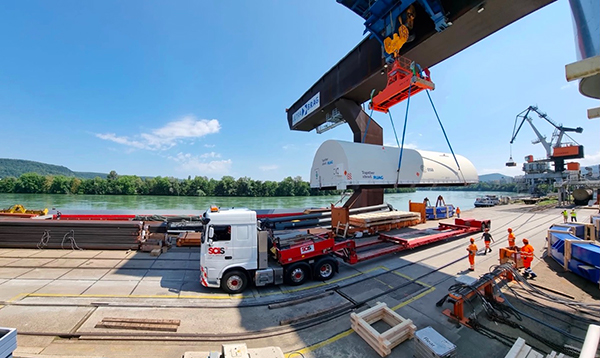
©Beyond Gravity
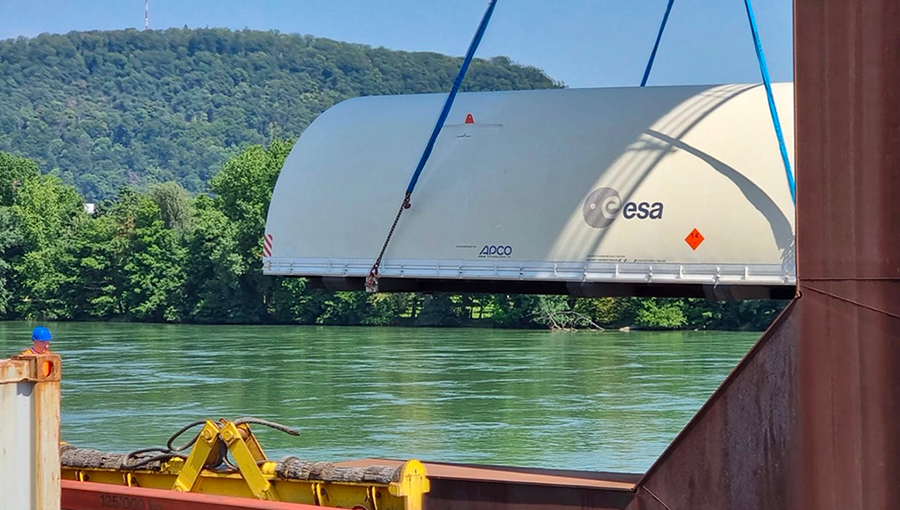
©Beyond Gravity
In Emmen, the fairing is loaded onto a vessel on the Rhine and heads off on a first five- to seven-day cruise to Rotterdam (in the Netherlands).
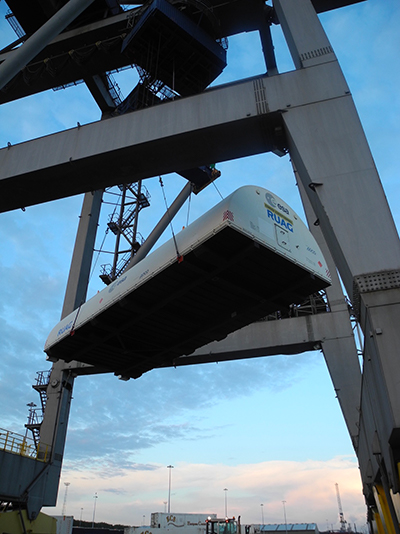
©Beyond Gravity
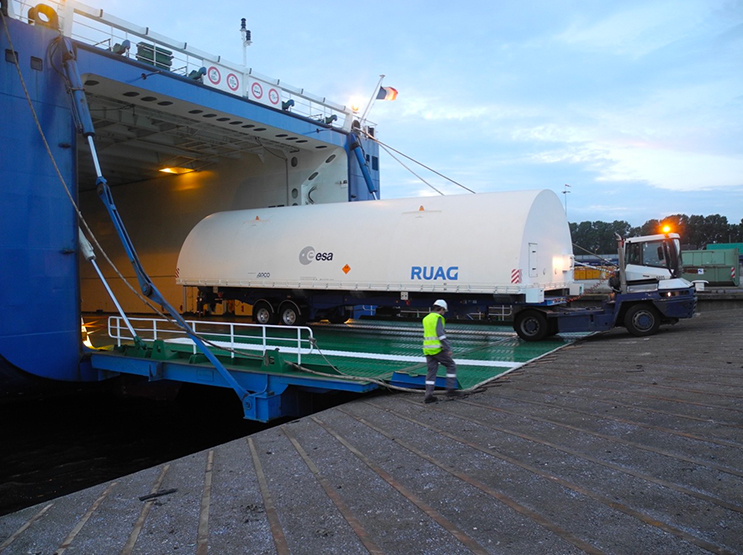
©Beyond Gravity
In Rotterdam, the teams transfer the fairing onto the ship that will transport the other parts of the launcher.
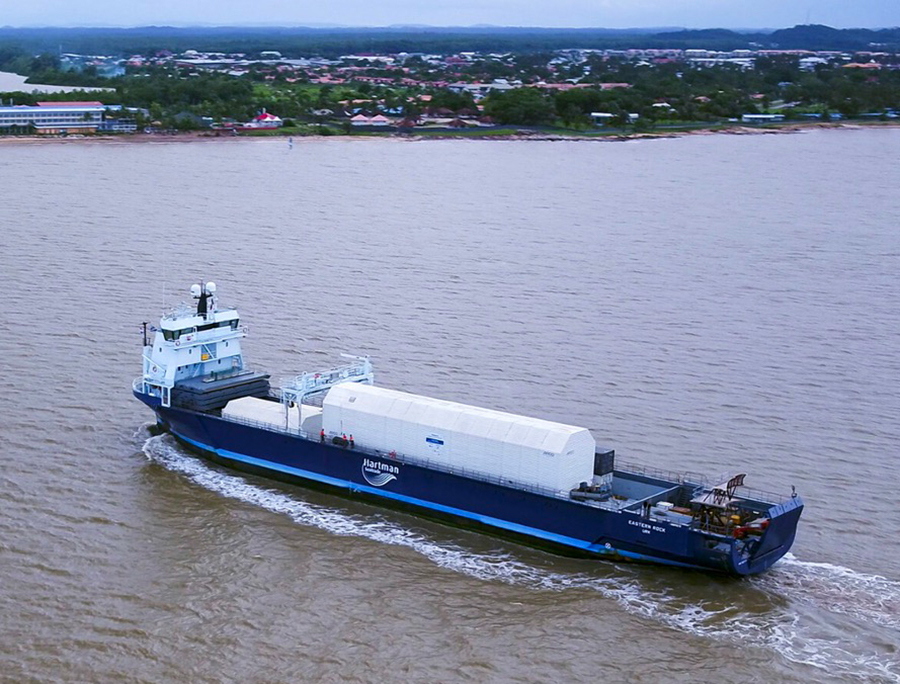
Once all the parts have arrived, these very special passengers begin their 7,000-km trip across the Atlantic. It takes the ship between 10 days and two weeks to complete the ocean crossing to French Guiana in South America.
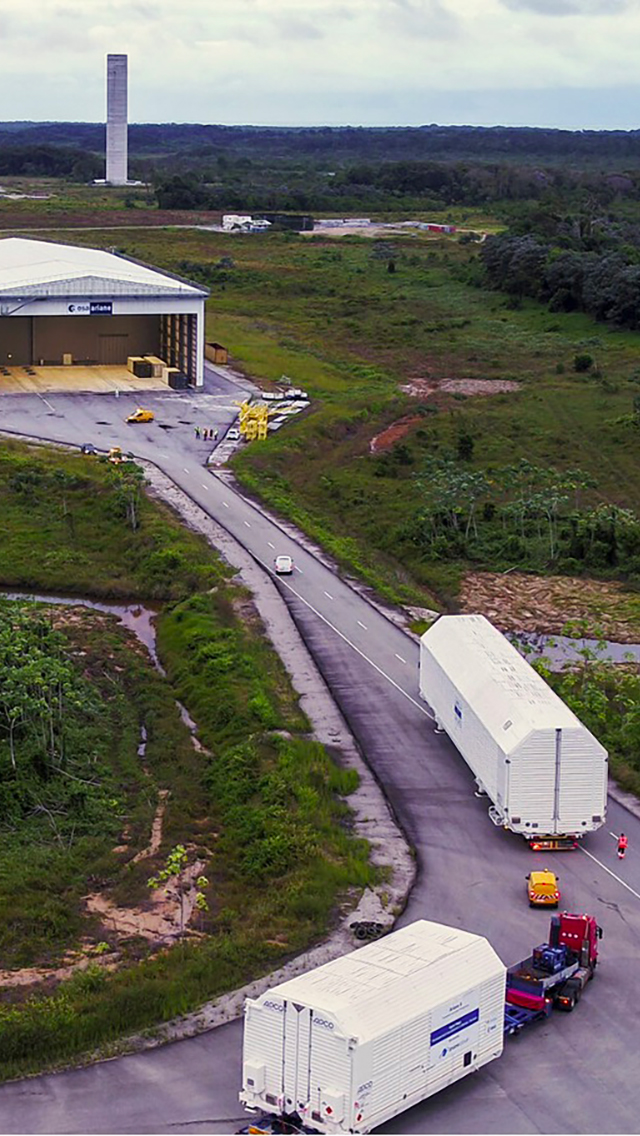
On their arrival in Kourou, they hit the road again, heading for Europe’s Spaceport, the Guiana Space Center (CSG) located just a few kilometers from the port. The roads at the center are adapted to these big containers to facilitate the last leg of the journey.
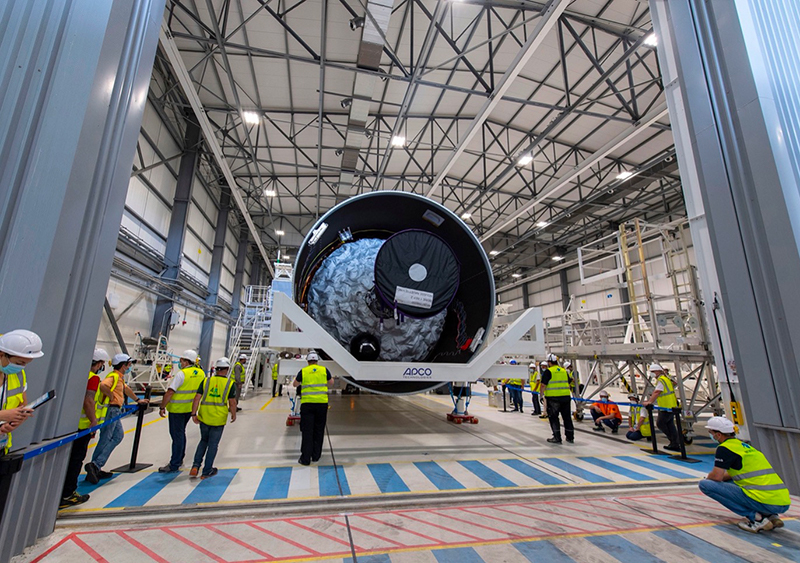
Once the parts are safely inside the integration building, they are unloaded and checked for damage before being assembled ready for lift-off!
We often say that it takes a village to build an empire. Through this voyage, the different sites and the distances travelled, we wanted to shine a spotlight on the many people and the tremendous efforts it takes to build our launchers from start to finish. A whole continent works in concert to bring these parts together and build dependable launchers in which Europe takes such pride.